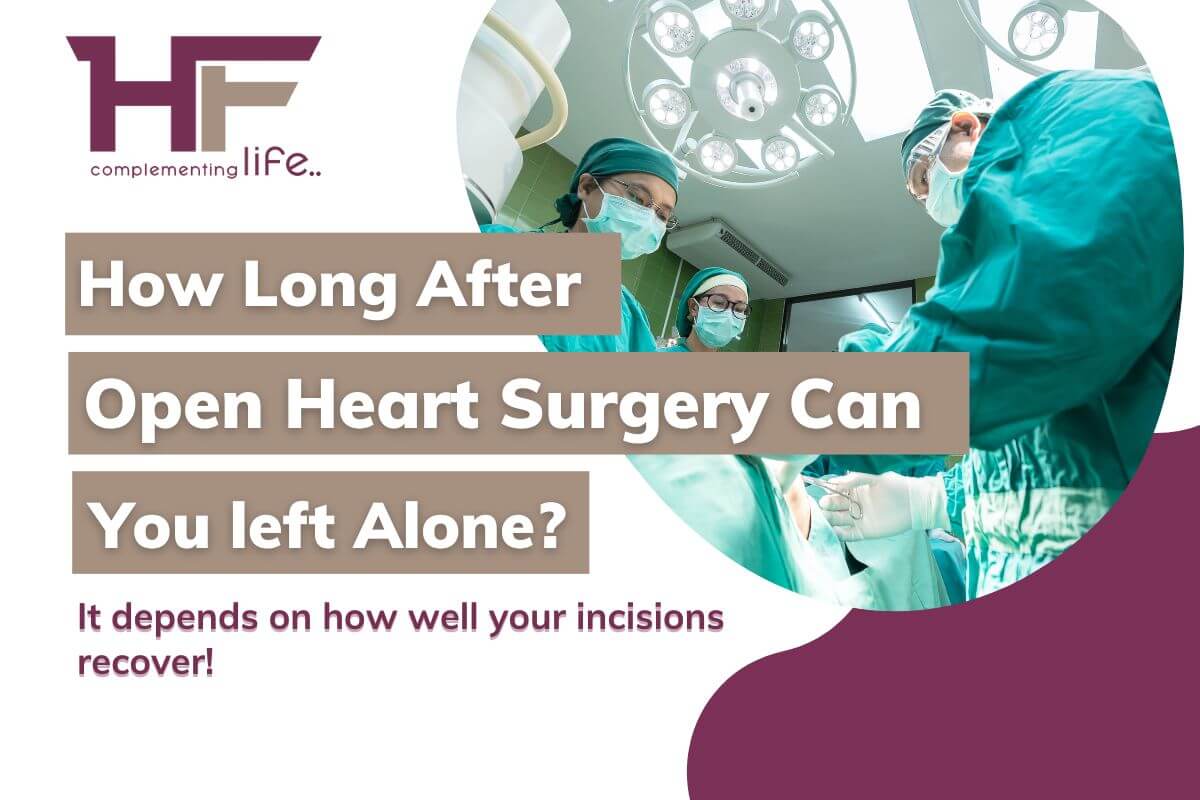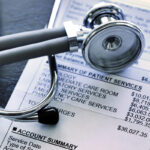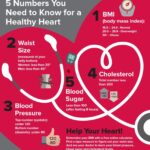When It's Safe to Travel by Car After Open-Heart Surgery: Timelines, Tips, and Step‑by‑Step Planning

Essential Answer at a Glance
Most patients can ride as a passenger immediately after discharge, with frequent leg-stretch breaks, but should typically avoid
driving
for about 4 weeks after coronary artery bypass grafting (CABG) or other sternotomy-based open-heart surgeries-pending individual clearance from their clinician. Recommendations commonly range from 4 to 8 weeks for driving after a median sternotomy, reflecting healing needs and safety considerations
[1]
[2]
.
Why Driving Is Delayed After Open-Heart Surgery
Open-heart surgery performed through a median sternotomy requires time for the breastbone to heal; pain, fatigue, and medications can also slow reaction time and make sudden braking or steering risky during early recovery [1] . Clinical guidance acknowledges wide variation in return-to-driving advice, with respected institutions advising no driving for 4-8 weeks so the sternum can heal, and broader ranges of 3-8 weeks in some national recommendations [2] .
Passenger vs. Driver: What You Can Usually Do
Riding as a passenger : Many programs indicate patients may travel as a passenger soon after discharge, including by car, airplane, or train, provided they take precautionary measures like frequent leg stretches and seatbelt padding if needed [1] . Some cardiac resources also note you can travel as a passenger any time after a heart procedure, emphasizing case-by-case clinician review for driving resumption [3] .

Source: flyreva.com
Driving yourself : For CABG and many open-heart procedures involving sternotomy, a common minimum is no driving for about 4 weeks , with some programs extending to 6-8 weeks depending on healing, symptoms, and medications. Always obtain explicit clearance from your cardiac surgeon or cardiologist before returning to the driver’s seat [1] [2] .
Typical Timelines After Open-Heart Surgery
- Days 0-14 : Focus on wound care, pain control, and short walks. Use a small pillow between your chest and the shoulder strap for comfort; do not skip the seatbelt. Riding as a passenger is allowed with frequent breaks on longer trips [1] .
- Weeks 2-4 : Gradually increase activity per your rehab plan. Most programs still advise no driving until at least 4 weeks post-op for sternotomy cases, longer if pain or sedating medications persist [2] .
- Weeks 4-8 : Many patients receive clearance to resume driving in this window if the sternum is stable, pain is controlled, and there are no complications or impairing medications. Some programs and clinicians recommend toward the longer end of 6-8 weeks for added safety [2] .
Note: For non-sternotomy procedures (e.g., some minimally invasive cardiac surgeries), timelines may differ; always follow your surgeon’s specific instructions.
Planning a Car Trip as a Passenger (Step-by-Step)
1) Confirm readiness : Before discharge, ask your care team when passenger travel is appropriate for you, and if any special precautions apply given your procedure and medications [1] .
2) Seatbelt comfort and sternal protection : Wear your seatbelt at all times. If the belt irritates your incision, place a small pillow between your chest and the shoulder strap to reduce pressure while maintaining restraint safety [1] .
3) Break schedule : On trips longer than an hour, plan stops every 60 minutes to stand, walk, and gently stretch your legs to reduce stiffness and support circulation. This is especially helpful if you had extended anesthesia and are less active early on [1] .
4) Pain and medication check : If you are using opioid pain medicines or sedatives, avoid driving and consider shorter rides to limit discomfort. Coordinate dosing to avoid peak drowsiness during travel days [1] .
5) Insurance and documentation : If traveling out of your local region or province/state soon after surgery, review your health coverage for post-surgical care needs and keep a medication list and discharge summary accessible in case of urgent care visits [1] .
When You Can Consider Driving Again
Clinical clearance is essential before resuming driving. Programs commonly advise at least 4 weeks before driving post-CABG or sternotomy, with 6-8 weeks often recommended to protect sternal healing and ensure safe reaction times. A 2019 review highlights the variability of guidance and emphasizes safety-based restrictions in this period [2] [1] .
Special Cases: Heart Attack vs. Open-Heart Surgery
Some people ask about heart attacks and car travel, which differs from postoperative sternotomy care. Guidance for driving after a heart attack (without surgery) can be shorter; for example, a national resource suggests typical waits of around 2 weeks for private drivers post-myocardial infarction, depending on complications, while CABG often requires at least 4 weeks. Always follow personalized advice based on your event and treatments [4] .
Practical Safety Checklist for Car Travel
- Before the trip : Confirm surgeon/cardiologist approval for riding or driving; review meds for drowsiness; plan stops every hour; pack a pillow for the shoulder belt; bring water and your medication list [1] .
- During the trip : Keep the seat upright to avoid slumping; support the chest with a pillow when coughing or sneezing; practice ankle pumps at rest stops to support circulation; avoid lifting heavy bags during stops [1] .
- If you must drive after clearance : Start with very short, low-traffic routes; avoid high-speed roads initially; stop immediately if you feel chest pain, dizziness, shortness of breath, or new palpitations, and contact your care team [2] .
Common Challenges and How to Solve Them
Seatbelt discomfort : Use soft padding between the sternum and shoulder belt; adjust the seat height and belt position while maintaining proper restraint. Some patients find a small travel pillow or folded towel helpful [1] .
Fatigue and medication effects : Early post-op fatigue is common. If you feel drowsy or mentally foggy, avoid driving and keep passenger trips short. Reassess as medications are tapered and energy improves under clinical guidance [1] .
Long-distance travel soon after surgery : It may be feasible as a passenger if you take hourly breaks, hydrate, and move regularly. If traveling far from home, check coverage ahead of time and identify nearby urgent care or hospitals at your destination as a precaution [1] .
Alternatives and Support Options
If you cannot drive yet, consider rides from family or friends, taxi/rideshare, community transport services, or medical transport arranged through your clinic. Some cardiac rehab teams can advise local transportation resources. For air travel, policies and clearances vary by airline and medical status; seek written clearance from your physician when required and build in extra time for mobility and medication needs [3] .
Key Takeaways
- You can usually ride as a passenger shortly after discharge, using hourly movement breaks and comfort padding if needed [1] .
- Driving after a sternotomy-based open-heart surgery typically requires at least 4 weeks, with many programs advising up to 6-8 weeks; get explicit clearance from your clinician [2] .
- Heart attack recovery (without surgery) may allow earlier driving than sternotomy recovery, but only with clinician approval and based on complications and treatments [4] .
How to Get Personalized Clearance
Schedule a follow-up appointment with your cardiac surgeon or cardiologist, bring a list of medications, and ask specifically: “When can I safely drive?” and “Are there restrictions for long car trips as a passenger?” Provide details on your planned route, distances, rest stops, and whether you’ll be lifting luggage. This individualized plan ensures your recovery and travel goals align.
References
[1] Fraser Health (Accessed 2025). Recovering at home after your cardiac surgery.
[2] Altering driving restrictions after median sternotomy. PMCID: PMC6541070 (2019).

Source: flyreva.com
[3] St Vincent’s Heart Health (Accessed 2025). Travel with a heart condition.
[4] Heart Foundation (Accessed 2025). Driving and travelling after a heart attack.






